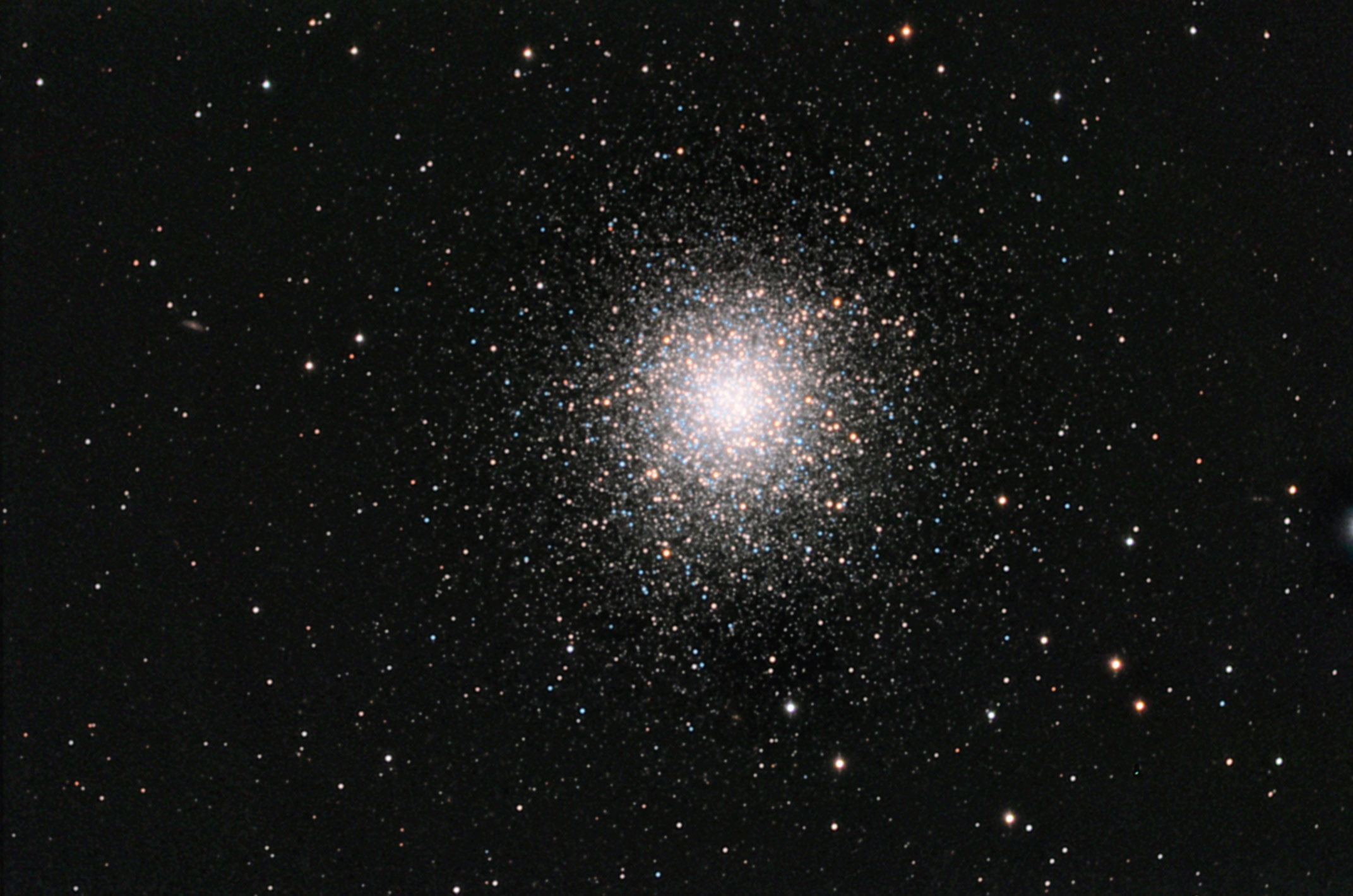News
NASA’s Next-Generation Asteroid Impact Monitoring System Goes Online

Near-Earth Objects (NEOs) are comets and asteroids that have been nudged by the gravitational attraction of nearby planets into orbits that allow them to enter the Earth’s neighborhood. Composed mostly of water ice with embedded dust particles, comets originally formed in the cold outer planetary system while most of the rocky asteroids formed in the warmer inner solar system between the orbits of Mars and Jupiter. To date, nearly 28,000 Near-Earth Asteroids (NEAs) have been found by survey telescopes that continually scan the night sky, adding new discoveries at a rate of about 3000 per year. But as larger and more advanced survey telescopes turbo-charge the search over the next few years, a rapid uptick in discoveries is expected. In anticipation of this increase, NASA astronomers have developed a next-generation impact monitoring algorithm called Sentry-II to better evaluate NEA impact probabilities.
Kiss the Sky Tonight -- Month of March 2022
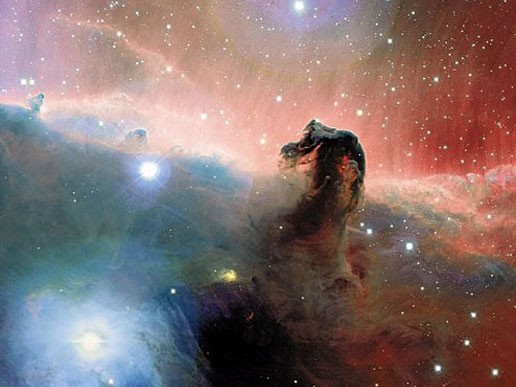
Welcome to the night sky report for March 2022 -- Your guide to the constellations, deep sky objects, planets, and celestial events that are observable during the month. In March, the stars of spring lie eastward. Look for the constellations Gemini and Cancer to spot interesting celestial features like star clusters M35, the Beehive Cluster (M44), and NGC 3923, an oblong elliptical galaxy with an interesting ripple pattern. Find the Y-shaped constellation Taurus, the bull, high in the southwest. The Hyades star cluster forms the bull's face. Look for Saturn to join Venus and Mars in the morning sky around mid-month.
John Glenn’s Orbital Flight – 60 Years Ago Today
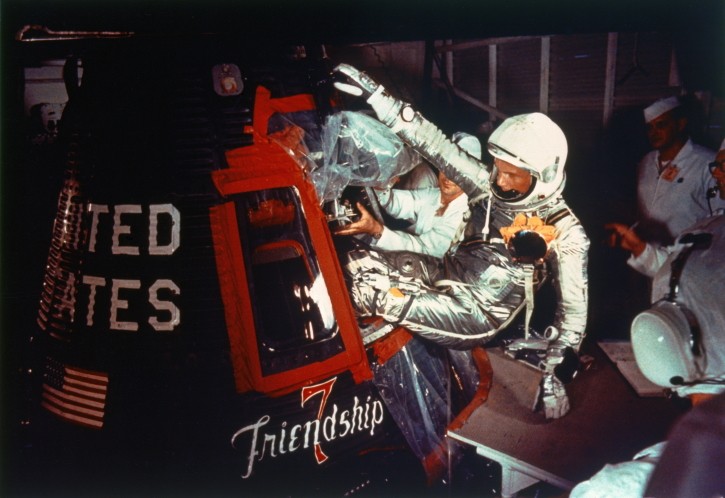
Sixty years ago today, on February 20, 1962, astronaut John H. Glenn Jr. became the first American to orbit the Earth. While Glenn's flight on Friendship 7 was a glorious national triumph, problems arose during the mission that could have spelled disaster. The most nervous moments of the flight came before and during reentry, when a signal received on the ground (erroneously, as it turned out) indicated that the capsule's heat shield had come loose. At one point during reentry, Glenn thought his shield was burning up and breaking away. But everything worked out well and he splashed down safely 40 miles short of his target. Glenn returned to Earth a national hero.
Several Billion Jupiter-sized Rogue Planets May be Roaming Freely in the Our Galaxy Without a Host Star
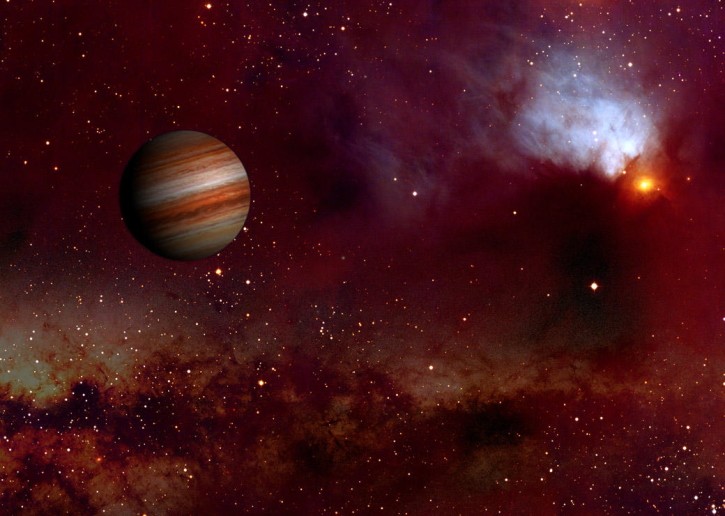
Rogue planets are elusive cosmic objects that have masses comparable to those of the planets in our Solar System but do not orbit a star, instead roaming freely on their own. Possible examples of rogue planets have been found before, but without knowing their ages, it was not possible for astronomers to know whether they were really planets or brown dwarfs - failed stars that lack the bulk to trigger the reactions that make stars shine. These objects started to become known in the 1990s when astronomers found that the point at which a brown dwarf crosses over into the planetary mass range was difficult to determine. Not many were known until now, but the astronomers at the University of Bordeaux in France have just discovered between 70 and 170 new rogue planets in the Milky Way. This is the largest collection of rogue planets ever discovered at one time and if extrapolated, could indicate that there are several billion of these giant rogue planets roaming freely in the Milky Way without a host star.
Kiss the Sky Tonight -- Month of February 2022
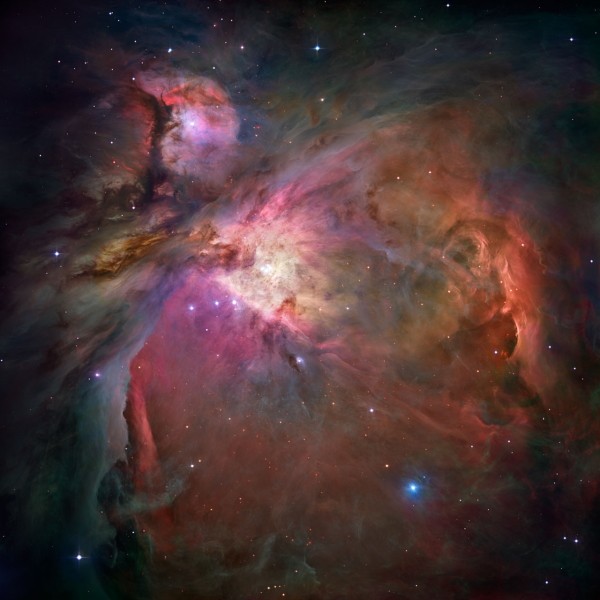
Welcome to the night sky report for February 2022 -- Your guide to the constellations, deep sky objects, planets, and celestial events that are observable during the month. In February, the Winter Triangle is your guide to the night sky. The northern hemisphere is treated to views of the stars Procyon, Sirius, and Betelgeuse, as well as awe-inspiring views of the Orion Nebula, sculpted by the stellar winds of central bright stars. Jupiter is the lone planet lingering in twilight skies after sunset in February. It exits the evening sky this month leaving no bright planets there until August (save for a brief appearance from Mercury in April). Also Venus is at peak brightness for the year in the mornings, and it's a great time to view the Orion Nebula.
55 Years Ago – Tragedy on the Launch Pad

On Jan. 27, 1967, with the planned launch of the first Apollo mission to carry a crew just 25 days away, Apollo 1 astronauts Virgil I. “Gus” Grissom, Edward H. White, and Roger B. Chaffee were conducting a key test with their spacecraft on the launch pad. The test involved a mock countdown with the astronauts wearing spacesuits inside their capsule, sealed and pressurized with oxygen. At the time of simulated liftoff, the plan called for the spacecraft to switch to its own internal power source. The crew also planned an emergency escape drill from the spacecraft at the test’s conclusion. During the test, a flash fire swept through their spacecraft so quickly they had no time to open the hatches. The astronauts perished from toxic gases in the craft’s environmental control system. Each January NASA pauses to honor members of the NASA family who lost their lives while furthering the cause of exploration and discovery, including the crews of Apollo 1 and space shuttles Challenger and Columbia. In 2022, the Day of Remembrance is observed on Jan. 27. This year’s NASA Day of Remembrance also marks 55 years since the Apollo 1 tragedy.
High Speed Magnetic Propeller Star Completes a Full Rotation Every 25 Seconds
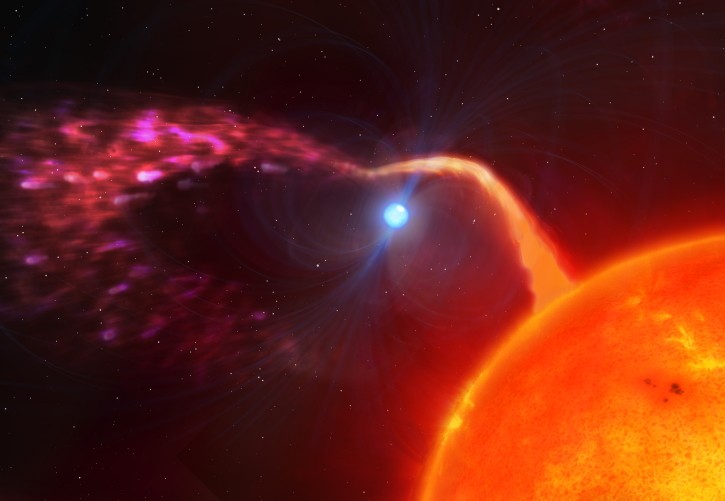
A white dwarf that completes a full rotation once every 25 seconds has been confirmed to be the fastest spinning white dwarf ever observed, according to a team of astronomers at the University of Warwick in the UK. A white dwarf is a star that has burnt up all of its fuel, has shed its outer layers, and is now undergoing a process of shrinking and cooling. The team established the spin period of the star and determined that it is as an extremely rare example of a magnetic propeller binary system, where the white dwarf pulls gaseous plasma from a nearby companion star and flings it into space at around 3000 kilometers per second. This fast-spinning star is about the size of the Earth but is thought to be at least 200,000 times more massive. It is only the second magnetic propeller white dwarf that has been identified in over seventy years of searching.
Controversial Decision that Booted-Out Pluto Appears to be Rooted in Folklore and Astrology – Certainly We Can Do Better

A team of top researchers say one thing needs to be cleared up -- “What exactly is a planet?” In a recent study, the researchers hope to set the record straight with a look at how a planet’s definition has changed since the time of Galileo to the controversial decision the International Astronomical Union (IAU) made in 2006 to create a new definition, one that made Pluto no longer a planet. The researchers say the IAU’s current definition is rooted in folklore, including astrology, and that the organization should rescind it. So, what is a planet? For generations the answer was easy -- A big ball of rock or gas that orbited the Sun. And there were nine of them in our Solar System. But then astronomers started finding more Pluto-sized objects orbiting beyond Neptune. Then they found Jupiter-sized objects circling distant stars -- First by the handful and then by the hundreds. Suddenly the answer wasn't so easy. Were all these newly found things planets? The IAU, who is in charge of naming newly discovered worlds, tackled the question at their 2006 meeting. They tried to come up with a definition of a planet that everyone could agree on. But the astronomers couldn't agree, so they voted and picked a definition that they thought would work. The results have been mixed. In the end, the IAU did accomplish one thing -- They figured out a way to turn something simple into something complex.
Kiss the Sky Tonight -- Month of January 2022

Happy New Year and welcome to the night sky report for January 2022 -- Your guide to the constellations, deep sky objects, planets, and celestial events that are observable during the month. The winter sky is filled with brilliant stars and this year, stargazing is at its best on the nights around the new moon at the beginning of the month. In January, the northern hemisphere features beautiful views of Capella - a pair of giant yellow stars, Aldebaran - a red giant star, two star clusters - the Hyades (Caldwell 41) and the Pleiades (M45), and the Crab Nebula (M1, NGC 1952). In the first week of January you can catch the peak of the Quadrantid meteor shower. Then look for the Moon with Jupiter on January 5 and with Mars and Venus on January 29.
NASA’s Parker Solar Probe Touches the Sun
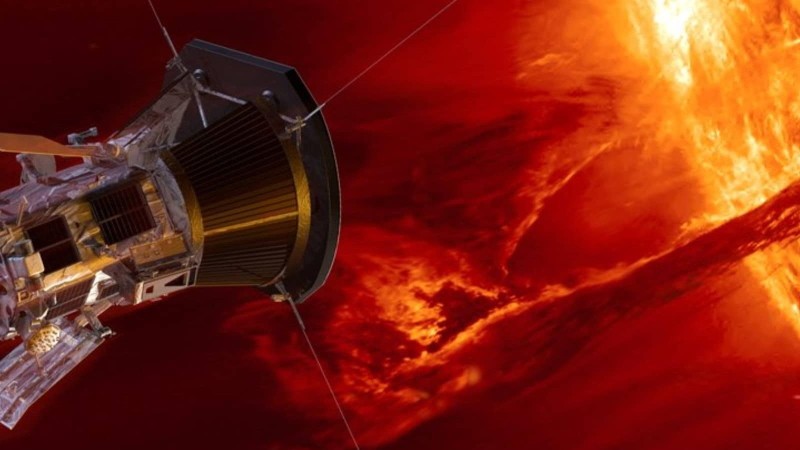
For the first time in history, a spacecraft has touched the Sun. NASA’s Parker Solar Probe has now flown through the Sun’s upper atmosphere – the corona – and sampled particles and magnetic fields there. At its closest approach toward the end of its seven-year mission, Parker Solar Probe will swoop within 3.83 million miles of the solar surface. That will place Parker well within the Sun's corona, a dynamic part of its atmosphere that scientists think holds the keys to understanding much of the Sun's activity. The current record-holder was a spacecraft called Helios 2, which came within 27 million miles. To put this in perspective, Mercury orbits at about 36 million miles from the Sun. Parker Solar Probe will also break the record for the fastest spacecraft in history. During its final orbits, closest to the Sun, the spacecraft will reach speeds up to 430,000 mph. That's fast enough to travel from New York to Tokyo in less than a minute.
NASA Launches IXPE Mission to Explore the Universe’s Most Violent and Exotic Objects

NASA’s Imaging X-ray Polarimetry Explorer (IXPE) mission launched this morning on a SpaceX Falcon 9 rocket from NASA’s Kennedy Space Center in Florida. A joint effort with the Italian Space Agency, the IXPE observatory is NASA’s first mission dedicated to measuring the polarization of X-rays from the most extreme and mysterious objects in the universe – supernova remnants, supermassive black holes, magnetars, and dozens of other high-energy objects. The new mission builds on and complements the scientific discoveries of other telescopes, including the Chandra X-ray Observatory, NASA’s flagship X-ray telescope. First light operations are scheduled to begin in January 2022.
Kiss the Sky Tonight -- Month of December 2021

Welcome to the night sky report for December 2021 -- Your guide to the constellations, deep sky objects, planets, and celestial events that are observable during the month. Step outside on a cold December night when the stars shine bright to find the Big Dipper, Cassiopeia, and Cepheus. They will help you locate a binary star system (Eta Cassiopeiae), a fan-shaped open star cluster (M103 or NGC 581), and a variable star (Mu Cephei). See three planets after sunset, and then say goodbye to Venus as the "Evening Star" at the end of the month. Hunt for newly discovered Comet Leonard in the early morning through mid-month. Finally, get up early on December 14th to watch for Geminid meteors after local moonset, around 2:00 AM. The night sky is truly a celestial showcase. Get outside and explore its wonders from your own backyard.
Astronomers Detect an Exoplanet in Another Galaxy
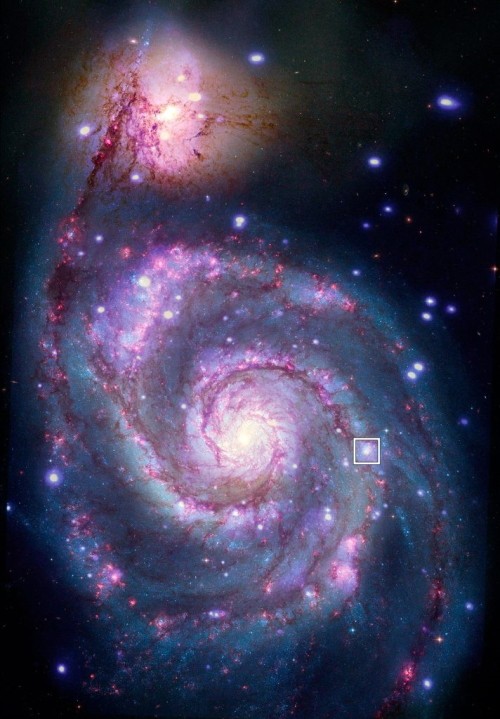
Exoplanets are defined as planets outside of our Solar System. Until now, astronomers have found all other known exoplanets and exoplanet candidates in the Milky Way galaxy -- Almost all of them less than about 3000 light-years from Earth. Now, signs of a planet transiting a star outside of the Milky Way galaxy may have been detected for the first time. The possible exoplanet candidate is located in the spiral galaxy Messier 51 (M51), also called NGC 5194 or the Whirlpool Galaxy because of its distinctive profile. This intriguing and unprecedented result, using NASA’s Chandra X-ray Observatory, opens up a new window to search for exoplanets at greater distances than ever before.
Funding Member
Sponsors
- AstroMart LLC
- BW
- FocusKnobs
- Matsumoto Company
- RemoteSkies.net
- ASTROPHOTOGRAPHY BY MARTIN PUGH
- Desert Sky Astro Products
- Rouz Astro
- OMI OPTICS USA LLC
- Anacortes Telescope
- APM-Telescopes
- Astromart Customer Service
- astronomy-shoppe
- Bob's Knobs
- BBLABS LLC
- Waite Research
- SellTelescopes.com
View all sponsors
